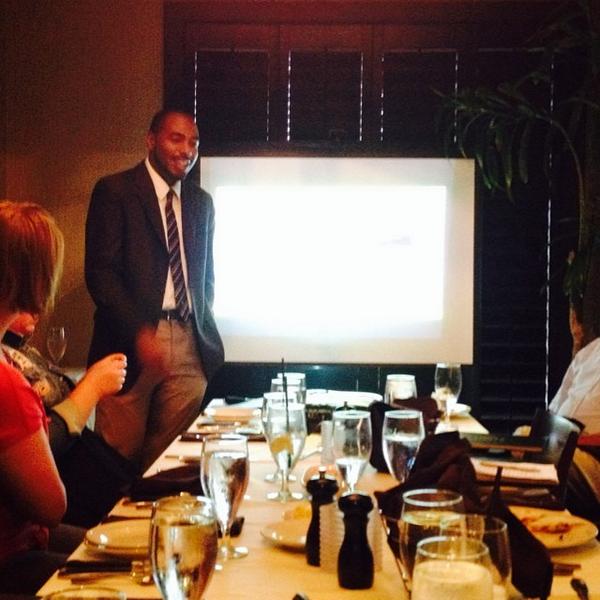Patrick McFadden on Small Business Marketing and The Future of Indispensable Marketing [Interview]
Strategic marketing expert, Patrick McFadden, knows a thing or two about developing a strong marketing plan and strategy. After leaving his full-time engineering position, he transformed his coaching business from an unknown entity into a well-respected firm in the small business community in just five years. Since then, he’s achieved a lot – including starting Indispensable Marketing, a strategic marketing firm focused on helping small business owners develop and implement a marketing plan and strategy. The company represents many small business clients including local Handyman Matters of Richmond and nationally known 21 st Century Expo Group.
In addition, Patrick is a guest host to different business shows, speaks anywhere an audience gathers, is a media source and answers questions from Quora and American Express OpenForum. Questions range from those about personal development and success principles to marketing and small business. Recently, we got to hold our own version of Q&A with McFadden about his business and upcoming projects in 2016.
Tell us a little bit about the objectives and goals of Indispensable Marketing.
Indispensable Marketing is helping small business owners around the world develop and implement a strong marketing plan and strategy so they rise above the competition and mediocrity to become the most trusted resource and obvious choice in the industries they serve.
How is Indispensable Marketing different from other marketing agencies?
Truth is, I just think we are better at strategic marketing. We don’t provide small business owners with a website or a brochure package (but we will certainly advise business owners and connect them with the right people), instead we guide business owners in the process of evaluating their business, their customers, their competition, their goals, and the way business owners and their staff work. Then, we work with business owners to develop and implement a marketing plan to help meet those overall business goals. I’m also a practitioner President and Marketing Consultant and that’s like asking people how Seth Curry is different than other all-star players or different than me. He just has more skill at it. We just have more skills in marketing strategy, and marketing implementation.
What is a typical day at Indispensable Marketing like?
Strategic and intentional order.
You’ve been successful. What lessons could other small business owners learn from you and your company?
They could learn to develop strategic patience and go about the business of earning trust, every single day.
What accomplishment are you personally most proud of?
Obviously I can go into family things that I’m proud of, but I’ll focus on me personally. I would say that I’ve, massively overcome having a speech impediment from my childhood. Proving to myself, my family and more than that, to the world, that with the right support, hard work and right mindset you can overcome your personal hurdle.
What inspires you?
I think that my parents. My dad has an incredible work ethic and my mother’s selflessness has been an inspiration. I was given talent and I feel a responsibility to execute against it.
Why are you passionate about this work?
I love giving people that “aha moment” and I love solving problems. Indispensable Marketing is the modern version of that, so, that’s it.
What is the last book you’ve read?
Raw: My 100% Grade-A, Unfiltered, Inside Look at Sports
( https://www.amazon.com/
If you weren’t doing this, what would you be doing?
I’d probably be a corporate business teacher. I like educating people and inspiring them. Business professionals are an intriguing challenge.
What’s next for you? For Indispensable Marketing?
More execution, more growth, and more of the same, which means trying to become the obvious choice for strategic marketing to small businesses.
How have you seen Small Business Marketing grow and change over the years?
Obviously, there’s a lot more things to do in terms of marketing. The internet has become a key research and discovery tool (just like the yellow pages once was) that current prospects use in their buying process. It all comes down to this: All successful businesses have a clear marketing plan and strategy that makes everything they do more effective.
What small business trends do you foresee taking over this year?
I think generating awareness and visibility is going to completely dominate, and I think content marketing will be on tips of business owner’s tongues.





